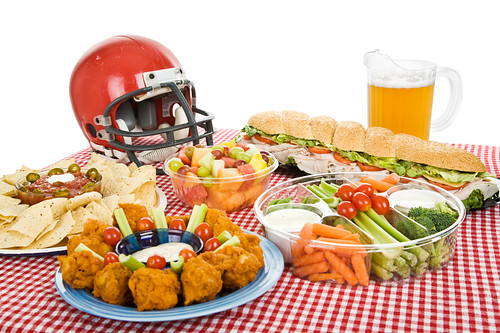
Celebrate Super Bowl 50 by looking at how food safety has changed over the past 50 years.
The Super Bowl is a very popular food “holiday” in the United States, and this year’s game marks a milestone. Super Bowl 50, dubbed the “Golden Super Bowl,” will be played on February 7, 2016.
Help set the gold standard and ensure that you and your guests remain free of foodborne illness by following four steps to food safety.
Super Bowl 1 – Super Bowl 50: How Food Safety Has Changed
Much has changed since the first Super Bowl was played in 1967. Both tickets and commercials have gotten significantly more expensive, with ticket costs increasing from $12 to over $10K and the price of commercials rising from $42K to $5 million. Instead of university bands, the half time show now features entertainers performing in elaborate costumes on impressive stages.
Just as the game has changed, our understanding of foodborne illness has also evolved. Since the first game, USDA research has found that color and texture are unreliable indicators of safety and doneness. Using a food thermometer is the only way to ensure that meat, poultry, and egg products have been cooked to a safe minimum internal temperature.
It is now known that kitchen towels can also be a major source of cross-contamination. To eliminate bacteria, kitchen towels should be washed frequently in the hot cycle of the washing machine. Paper towels should never be reused, since they are designed for single use. Multiple kitchen towels should be kept handy for use when the current one becomes dirty.
Clean, Separate, Cook & Chill
In spite of these changes, the four basic messages of food safety (clean, separate, cook, chill) have remained the same: CLEAN – SEPARATE – COOK – CHILL.
Before and after preparing, handling, or eating food, always wash your hands with warm water and soap for 20 seconds. Use clean plates, dishes, and utensils to serve food, and keep surfaces clean.
Make sure raw meat and poultry do not come into contact with other food. Use separate plates and utensils for these items, and never place cooked food back on the same plate that previously held raw food.
Always use a food thermometer when cooking meat and poultry products. The thermometer should be placed in the thickest part of the food and read after the manufacturer designated time.
- Cook raw beef, pork, lamb and veal steaks, chops, and roasts to 145 °F. For safety and quality, allow meat to rest for at least three minutes before carving or consuming.
- Cook raw ground beef, pork, lamb, and veal to 160 °F.
- Cook raw poultry to 165 °F.
Keep hot foods hot and cold foods cold. Hot foods must have a heat source, and cold foods should be kept on ice to remain at a safe temperature and out of the Danger Zone. The Danger Zone is the temperature range between 40 °F and 140 °F where bacteria multiply rapidly.
Leftover foods should be refrigerated promptly and not be kept at room temperature for more than two hours. Perishable foods left out longer than two hours should be discarded.
No comments:
Post a Comment